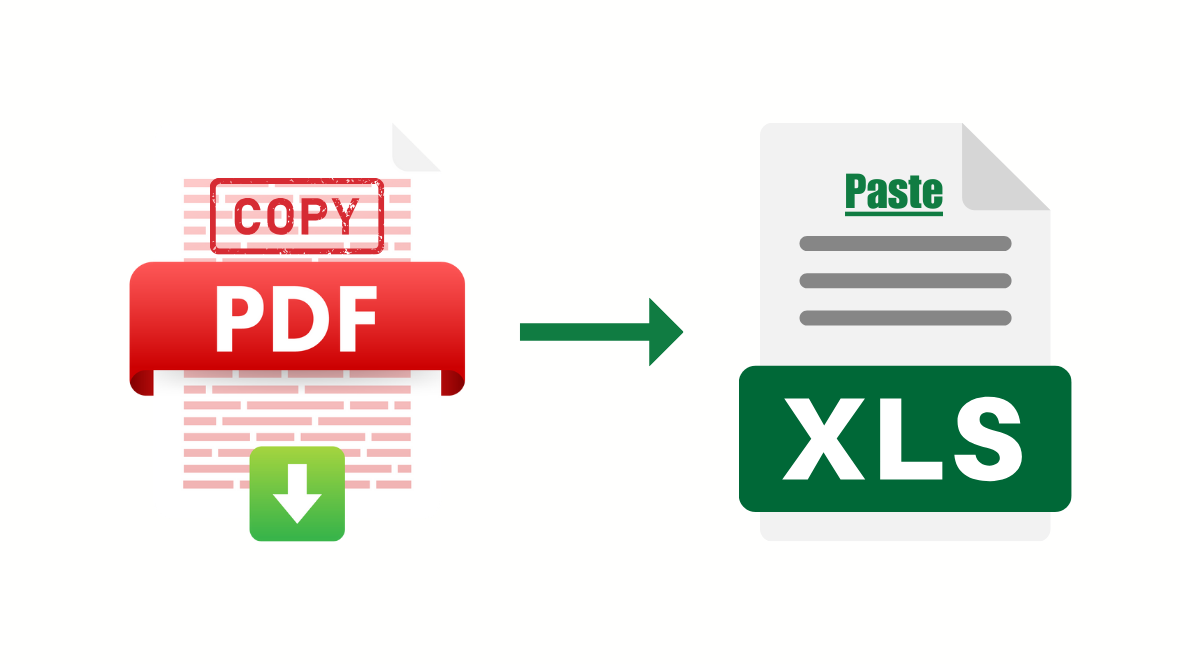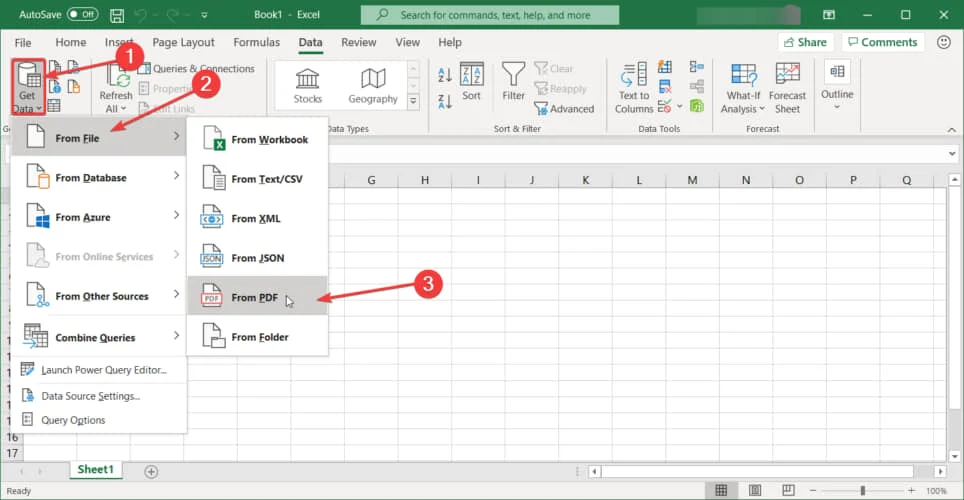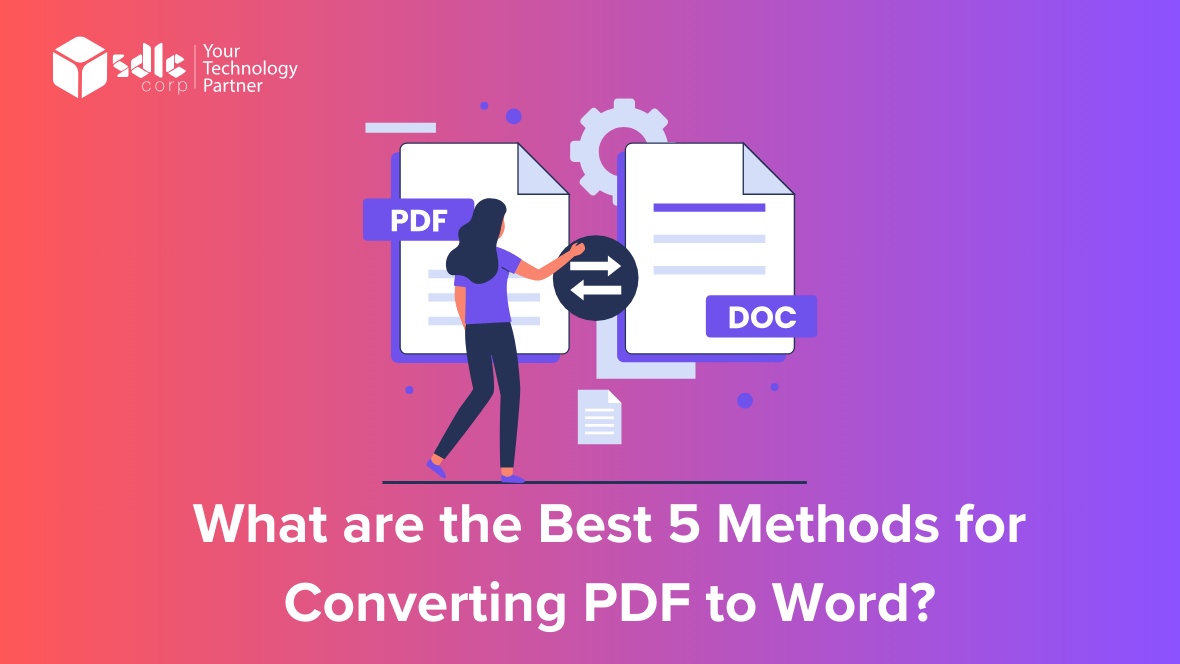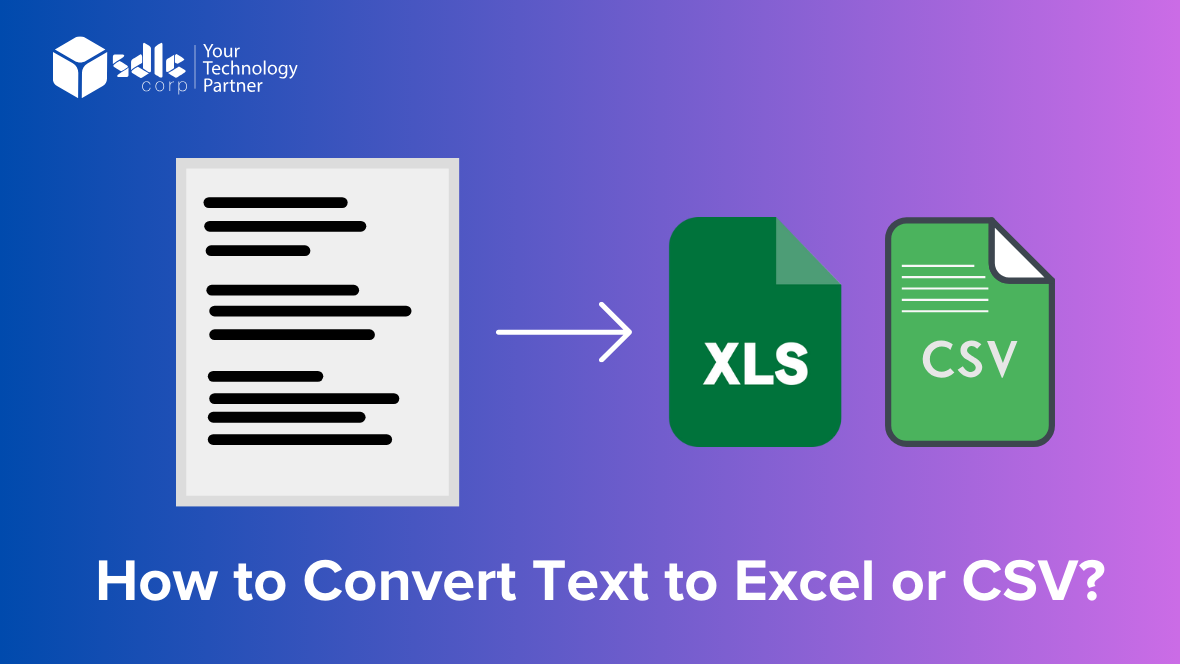Converting PDF files to Word documents can be accomplished through several effective methods, each catering to different user preferences and requirements. Online converters like Small pdf provide convenient platforms for seamless conversion directly from a web browser, ensuring user-friendly experiences with minimal effort. Desktop software options such as Adobe Acrobat Pro and Nitro Pro offer advanced features for precise conversion, including editing capabilities and preservation of formatting. Leveraging Google Docs allows for straightforward conversion by uploading the PDF and exporting it as a Word document while maintaining layout consistency. For mobile users, PDF Converter apps like Come docs offer on-the-go solutions, ensuring flexibility and convenience. Additionally, developers can utilize Python libraries such as PyPDF2 or pdf2docx to automate the conversion process, integrating it seamlessly into projects, including tasks like extracting PDF table to Excel, streamlining data management workflows effectively. These methods collectively provide diverse solutions tailored to various needs, ensuring efficient and accurate conversion from PDF to Word, even handling intricate elements like tables for further processing in Excel.
How Its Work?
- Online PDF to Word Converters: Online tools like Smallpdf, PDF2DOC, or Adobe Acrobat online offer convenient conversion services. Users upload their PDF files to the website, select the desired output format (such as Word), and then download the converted document. Some services may also offer OCR (Optical Character Recognition) functionality to convert PDF images to editable text.
- Desktop Software: Various desktop software solutions like Adobe Acrobat Pro, Nitro Pro, or Wonder share PDF element provide robust PDF editing capabilities, including conversion to Word format. These tools typically offer advanced features like batch conversion, OCR, and preserving formatting during conversion.
- Microsoft Word Built-in Conversion: Microsoft Word itself offers a built-in feature for converting PDFs to Word documents. Users can open a PDF directly in Word and then save it as a Word document. While this method is convenient, it may not always preserve formatting accurately, especially for complex PDFs.
- Google Docs:Google Docs simplifies the process of converting PDF files to editable documents by allowing users to upload PDFs directly to Google Drive and open them with Google Docs. This seamless conversion preserves text, images, and formatting, facilitating efficient editing and collaboration. With this feature, users can effortlessly convert PDFs to Google Docs format, streamlining document management and enhancing productivity.
- OCR Software: Dedicated OCR software like ABBYY FineReader or Tesseract can be used to convert PDF images to editable text. Users first need to extract images from the PDF using software like Adobe Acrobat or online PDF extractors, then use OCR software to convert those images to text. Finally, the resulting text can be copied into a Word document.
In summary, these methods offer various options for converting PDFs to Word documents, with some also capable of converting PDF images to editable text using OCR technology. Each method has its advantages and limitations, so users should choose the one that best suits their needs based on factors like accuracy, formatting preservation, and convenience.

How do I copy data from a PDF and paste it into Excel?
Copying text from a PDF and pasting it into Excel can sometimes be a bit tricky due to formatting issues and the nature of PDF documents. Here’s a detailed step-by-step guide to accomplish this task:
- Open the PDF file: Start by locating the PDF file you want to copy text from. You’ll need a PDF reader such as Adobe Acrobat Reader or a web browser that supports viewing PDFs.
- Select the text: Use your mouse cursor to highlight the text you want to copy from the PDF. You can do this by clicking and dragging over the text. If you need to select multiple sections of text, hold down the Shift key while clicking and dragging.
- Copy the text: Once you’ve selected the desired text, right-click on it and choose the “Copy” option from the context menu. Alternatively, you can press Ctrl + C (Command + C on Mac) on your keyboard to copy the selected text.
- Open Microsoft Excel: Launch Microsoft Excel on your computer. You can typically find it in your list of installed applications or by searching for it in the Start menu or Spotlight (on Mac).
- Create a new worksheet or open an existing one: If you want to paste the copied text into a new Excel worksheet, go to the “File” menu, select “New,” and then choose “Blank Workbook.” If you prefer to paste the text into an existing worksheet, open the desired workbook.
- Navigate to the cell where you want to paste the text: Click on the cell where you want the copied text to appear in the Excel worksheet. You can also select a range of cells if you want to paste the text into multiple cells.
- Paste the text: Right-click on the selected cell(s) and choose the “Paste” option from the context menu. Alternatively, you can press Ctrl + V (Command + V on Mac) on your keyboard to paste the copied text into the selected cell(s).
- Review and adjust formatting: Depending on the formatting of the text in the PDF and your preferences for the Excel worksheet, you may need to make adjustments. For example, you might need to adjust column widths, text alignment, or font styles to ensure that the pasted text looks good and is easy to read in Excel.
- Save your Excel file: Once you’re satisfied with the pasted text and any formatting adjustments, remember to save your Excel file to preserve your work. Go to the “File” menu and choose the “Save” or “Save As” option to save the file to your desired location on your computer.
By following these steps, you should be able to successfully copy text from a PDF and paste it into an Excel worksheet with detailed guidance.
"Exploring 5 Efficient Methods for PDF to Word Conversion"
What are some online PDF to Excel Converters Available?
Online PDF to Excel converters are tools available on the internet that allow users to convert PDF documents into Excel spreadsheets. These tools are particularly useful when users need to extract tabular data from PDF files for further analysis or manipulation in spreadsheet software like Microsoft Excel or Google Sheets. Here’s a detailed description covering various aspects of these converters:
- Purpose and Functionality: Online PDF to Excel converters serve the purpose of extracting tabular data from PDF documents and converting it into a format compatible with spreadsheet software. They employ optical character recognition (OCR) technology to recognize text within the PDF, and then they parse this text into a structured format that can be exported into an Excel spreadsheet.
- User Interface: These converters typically have a user-friendly interface accessible through a web browser. Users can upload their PDF files directly from their device or provide a URL to an online PDF document. Some converters may offer additional options such as specifying the range of pages to convert or adjusting settings related to the conversion process.
- Conversion Process: Upon uploading the PDF file, the converter processes the document to identify tables and extract data. OCR technology is often employed to accurately recognize text within the PDF, especially in cases where the PDF contains scanned images rather than selectable text. Once the data is extracted and structured, it is converted into an Excel-compatible format such as XLSX or CSV.
- Accuracy and Quality: The accuracy and quality of conversion can vary depending on factors such as the complexity of the tables in the PDF, the clarity of the text, and the effectiveness of the OCR technology used by the converter. Generally, converters with advanced OCR capabilities tend to produce more accurate results, especially when dealing with complex layouts or scanned documents.
- Supported Features: Some online converters offer additional features to enhance the conversion process or the output Excel file. These features may include: Options to customize the formatting of the Excel spreadsheet.
- Support for converting multiple PDF files in batch mode.
- Ability to handle password-protected PDFs.
- Support for converting PDFs in different languages.
- Integration with cloud storage services for seamless file management.
- Privacy and Security: Users are often concerned about the privacy and security of their documents when using online converters. Reputable converters prioritize user privacy by employing encryption protocols to secure data transmission and implementing strict privacy policies regarding the handling of user data. Additionally, some converters offer options to automatically delete uploaded files after conversion to further ensure data security.
- Cost and Accessibility: Many online pdf image to text offer basic conversion services for free, with limitations on factors such as file size, number of conversions per day, or access to advanced features. Premium or subscription-based models may provide enhanced functionality such as higher conversion limits, faster processing speeds, and priority support.
- Post-Conversion Editing: Once the PDF has been converted into an Excel spreadsheet, users may need to perform additional editing or formatting to tailor the data to their specific requirements. This may include adjusting column widths, applying formulas, cleaning up formatting inconsistencies, or merging data from multiple tables.
Overall, online PDF-to-Excel converters provide a convenient solution for extracting tabular data from PDF documents and converting it into a format suitable for further analysis or manipulation in spreadsheet software. Users should consider factors such as accuracy, security, and additional features when choosing a converter that best suits their needs.
How to Export Pdf Data to Excel Using Adobe Acrobat?
- Open Adobe Acrobat: Start by opening Adobe Acrobat on your computer. Make sure you have the PDF file that you want to export data from and the Excel program installed.
- Open the PDF File: Click on “File” in the menu bar and select “Open” to choose the PDF file you want to work with. Alternatively, you can drag and drop the PDF file directly into the Acrobat window.
- Access the Export Feature: Once the PDF file is open, navigate to the “Tools” tab in the top menu bar. From the tools pane on the right-hand side, choose “Export PDF” option. This will open up the export options for your PDF file.
- Select Excel as the Export Format: In the Export PDF tool, choose “Spreadsheet” as the export format. Then, select “Microsoft Excel Workbook” as the specific format option. You may also be given the option to export to Excel Online or Google Sheets, depending on your Adobe Acrobat version.
- Choose Export Settings: Depending on your requirements, you may want to adjust some export settings. For example, you may choose whether to export the entire document or just a portion of it. You can also choose the layout options, such as whether to export comments or form fields.
- Select Export Location: After configuring your export settings, click on the “Export” button. You will then be prompted to choose a location on your computer where you want to save the exported Excel file. Choose a location and click “Save”.
- Wait for the Export Process: Adobe Acrobat will then begin the process of exporting the PDF data to Excel. The time this takes will depend on the size and complexity of your PDF file.
- Open the Excel File: Once the export process is complete, navigate to the location where you saved the Excel file. Double-click on the file to open it in Microsoft Excel or your default spreadsheet program.
- Review and Edit as Necessary: Review the exported Excel file to ensure that the data has been transferred accurately. Depending on the complexity of the original PDF file, you may need to do some formatting or cleanup in Excel to organize the data properly.
- Save and Close: Once you’re satisfied with the exported Excel file, save any changes you’ve made and close the file.
That’s it! You’ve successfully exported data from a PDF file to an Excel spreadsheet using Adobe Acrobat.

How can I import data from a PDF into Excel?
Importing PDF data into Excel can be a bit tricky due to the inherent differences in file formats and data structures. However, with the right tools and techniques, you can efficiently extract and import PDF data into Excel. Here’s a detailed guide on how to do it:
Method 1: Using Adobe Acrobat
- Open the PDF file in Adobe Acrobat: Start by opening the PDF file containing the data you want to import into Excel.
- Select the Data: Use the selection tool in Adobe Acrobat to highlight the data you want to import. This could be a table, a list, or any other structured data.
- Copy the Data: Once selected, right-click on the highlighted data and choose the “Copy” option from the context menu.
- Open Excel: Launch Microsoft Excel on your computer.
- Paste the Data: In an Excel worksheet, select the cell where you want to paste the data. Then, right-click and choose the “Paste” option from the context menu. Alternatively, you can use the keyboard shortcut “Ctrl + V” (Cmd + V on Mac) to paste the data.
- Adjust Formatting: Depending on the complexity of the data, you may need to adjust the formatting in Excel to ensure that the data is properly structured. This may involve splitting cells, formatting numbers, or cleaning up any extraneous characters.
- Save the Excel File: Once you have imported the PDF data into Excel and made any necessary adjustments, save the Excel file to your desired location on your computer.
Method 2: Using PDF Conversion Tools
- Choose a PDF Conversion Tool: There are several third-party PDF conversion tools available online that can convert PDF files into Excel format. Some popular options include Adobe Acrobat Pro, Nitro Pro, and online converters like SmallPDF or Zamzar.
- Upload the PDF File: Use the chosen conversion tool to upload the PDF file containing the data you want to import into Excel.
- Select Excel as Output Format: In the conversion tool, specify Excel as the output format for the converted file.
- Convert the PDF File: Initiate the conversion process. Depending on the tool you’re using, this may involve clicking a button or following a series of prompts.
- Download the Excel File: Once the conversion is complete, download the Excel file containing the converted data to your computer.
- Open the Excel File: Locate the downloaded Excel file on your computer and open it using Microsoft Excel.
- Review and Adjust: Review the imported data in Excel and make any necessary adjustments to formatting or structure.
- Save the Excel File: After reviewing and adjusting the imported data, save the Excel file to your desired location on your computer.
"Choosing the Right Tool: 5 Methods for Converting PDFs to Word Documents "
What tools can I use to extract tables from PDF files?
Extracting tables from PDF documents and converting them into Excel format can be a daunting task without the right tools and techniques. In this comprehensive guide, we’ll walk you through the detailed steps to efficiently extract tables from PDFs using specialized table extraction tools and seamlessly convert them into Excel spreadsheets. Whether you’re dealing with financial reports, research papers, or any other tabular data in PDF format, this guide will equip you with the knowledge and skills to streamline the extraction process.
- Understanding Table Extraction Tools:
- Table extraction tools are software applications specifically designed to parse PDF documents and identify structured data in the form of tables.
- These tools utilize various techniques such as optical character recognition (OCR), pattern recognition, and machine learning algorithms to accurately extract tables from PDF files.
- Popular table extraction tools include Tabula, Camelot, PDFTables, and Adobe Acrobat Pro, each offering unique features and functionalities.
- Installing and Configuring Table Extraction Software:
- Begin by selecting a table extraction tool that best suits your requirements and download/install it on your computer.
- Follow the installation instructions provided by the software vendor to complete the setup process.
- Configure the settings of the extraction tool, such as language preferences, table detection sensitivity, and output format options, according to your preferences.
- Extracting Tables from PDF Documents:
- Launch the table extraction software and import the PDF document containing the table you wish to extract.
- Use the tool’s interface to specify the area of the PDF document where the table is located or let the software automatically detect tables within the document.
- Initiate the extraction process and wait for the software to identify and extract the tables from the PDF table into excel file.
- Refining Table Extraction Results:
- Review the extracted tables to ensure accuracy and completeness.
- Utilize features provided by the extraction tool to adjust column boundaries, merge or split cells, and handle any irregularities in the extracted tables.
- Manually validate the extracted data against the original PDF document to identify and correct any discrepancies.
- Converting Extracted Tables to Excel Format:
- Once you’re satisfied with the accuracy of the extracted tables, proceed to convert them into Excel format.
- Most table extraction tools offer options to export extracted tables directly to Excel or CSV (Comma-Separated Values) format.
- Select the desired output format (Excel) and specify any additional settings such as file naming conventions and destination folder.
- Post-Conversion Validation and Editing:
- Open the converted Excel file to verify the integrity and formatting of the extracted tables.
- Review the data for any errors or inconsistencies and make necessary adjustments using Excel’s editing capabilities.
- Save the final Excel spreadsheet containing the extracted tables for further analysis or sharing with others.
How can I automate the extraction of data from a PDF into Excel?
Automated data extraction from PDF to Excel involves using software tools or programming scripts to systematically extract information from PDF documents and transfer it into Excel spreadsheets. This process is particularly useful when dealing with large volumes of data contained within PDF files, which may be difficult or time-consuming to extract manually.
Here’s a detailed overview of the process:
- Understanding the PDF Structure: PDFs can have various structures, including text, tables, images, and sometimes a combination of these elements. Automated extraction methods need to account for these different structures.
- Choosing Extraction Tools or Methods: There are several methods and tools available for automated data extraction from PDFs to Excel. Some common options include:
- PDF parsing libraries: Libraries like PyPDF2 (for Python) or iText (for Java) allow developers to programmatically access text and metadata from PDF files.
- Optical Character Recognition (OCR) software: OCR software such as Adobe Acrobat or Tesseract can convert scanned PDF documents into editable text, which can then be further processed for extraction.
- Specialized extraction tools: Some software tools are specifically designed for extracting data from PDF tables, such as Tabula or Camelot.
- Custom scripts: For more complex PDF structures or specific requirements, custom scripts using programming languages like Python or PowerShell can be developed to extract data.
- Identifying Data Patterns: Before extraction, it’s essential to understand the layout and structure of the data within the PDF. This involves identifying patterns such as table structures, headers, footers, and any other relevant formatting.
- Extracting Text or Data: Using the chosen method or tool, extract the relevant text or data from the PDF document. This may involve extracting entire pages, specific sections, or individual elements such as tables or paragraphs.
- Cleaning and Preprocessing: Extracted text data often requires cleaning and preprocessing to remove unnecessary characters, correct errors introduced during OCR, or standardize formatting. This step helps ensure the accuracy and consistency of the extracted data.
- Converting to Excel Format: Once the data is extracted and cleaned, it needs to be formatted and organized into Excel-compatible structures. This typically involves creating or updating Excel spreadsheets, defining column headers, and populating cells with extracted data.
- Automation and Batch Processing: To handle large numbers of PDF files efficiently, automation is key. Batch processing techniques can be used to automate the extraction and conversion process for multiple PDF documents simultaneously.
- Validation and Quality Assurance: After extraction, it’s crucial to validate the accuracy and completeness of the extracted data. Quality assurance steps may include comparing extracted data with the original PDF, identifying discrepancies, and performing manual checks where necessary.
- Integration and Reporting: Depending on the application, the extracted data may need to be integrated into other systems or used for reporting purposes. Integration with databases, business intelligence tools, or custom applications may be required.
- Monitoring and Maintenance: Continuous monitoring and maintenance are essential to ensure the reliability and effectiveness of the automated extraction process. This includes updating extraction scripts or configurations as needed, addressing any issues or errors that arise, and adapting to changes in PDF formats or data structures over time.
Conclusion
In conclusion, the diverse array of methods available for converting PDF files to Word documents offers users flexibility and convenience in managing their digital documents. Each method discussed – including online converters, desktop software, OCR technology, mobile apps, and Adobe Acrobat – presents its own set of advantages and limitations. While online converters and mobile apps offer ease of access and simplicity, they may lack advanced features or security measures. On the other hand, desktop software and Adobe Acrobat provide robust functionalities but may require a financial investment. Additionally, the integration of Optical Character Recognition (OCR) technology across these methods enhances the conversion accuracy, particularly for PDFs containing images or scanned text. By considering factors such as conversion accuracy, speed, cost, and user-friendliness, individuals and organizations can choose the most suitable method for their PDF to Google Docs conversion needs. Regardless of the chosen method, the ability to seamlessly convert PDFs to editable Word documents significantly streamlines document management processes and facilitates efficient collaboration and editing workflows.
FAQs
1. Can Adobe Acrobat DC convert scanned PDF images to editable text in Word?
Yes, Adobe Acrobat DC has OCR (Optical Character Recognition) capabilities, allowing it to convert PDF images to editable text in Word.
2. Do online PDF to Word converters support converting PDF images to editable text?
Many online converters utilize OCR technology to extract text from PDF images and convert them into editable Word documents.
3. Is it possible to directly convert PDF images to text in Microsoft Word?
Yes, Microsoft Word offers built-in conversion tools that can recognize and extract text from PDF images, enabling users to edit the content within Word.
4. Can Google Docs convert PDF images to editable text documents?
Google Docs includes a feature that can convert PDF images to text using OCR technology, allowing users to edit the extracted text within the Google Docs environment.
5. How effective is dedicated PDF conversion software in converting PDF images to editable text for Word?
Dedicated PDF conversion software often offers robust OCR capabilities specifically designed to convert PDF images to editable text for Word processing, ensuring high accuracy and quality of the converted documents.
Contact Us
Let's Talk About Your Project
- Free Consultation
- 24/7 Experts Support
- On-Time Delivery
- sales@sdlccorp.com
- +1(510-630-6507)















